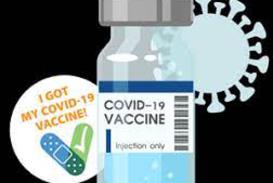Healthcare Medical Pharmaceutical Directory.com
Employee Benefits Consulting
Business Trends...
- Challenges of COVID-19 continue for benefit consulting firms in 2021 to balance medical, pharmacy, dental, vision, disability, retiree, stop loss and other care and cost trends spanning the employer and payer spectrums
- Clinical, financial, regulatory and policy changes create ongoing demand for risk management insights and guidance
- Scroll down to get insights on this highly influential healthcare business sector and its leading companies
Employee Benefit Consulting Market Sector Overview
The big splash in employee benefits consulting in 2020 that will continue to have an impact in 2021 and beyond was Aon's acquisition of Willis Towers Watson (NASDAQ: WTW). The transaction is valued at approximately $30 billion, it easily outsizes Aon's acquisition of Hewitt Associates for $4.9 billion in 2010. Aon (NYSE: AON) and Willis Towers Watson (WTW) are both based in London, U.K.; Aon generates about $11 billion in annual revenue and WTW produces just over $9 billion in yearly revenue. The combined equity value of the deal is estimated to be $80 billion. Aon enters 2021 as an even more formidable contender in employee benefits and management consulting.
Aon and Willis each offer an array of services, many which overlap, including investing advisement, employee benefits consulting, reinsurer broker deals plus other financial and risk management services. Aon's competitors will assertively respond to the Aon deal with their own mergers, acquisitions and organic business innovation in 2021.
Managed care organizations and health insurance companies are highly competitive and continually seeking to gain new plan members and clients while retaining existing business. To stay in front of healthcare cost increases and minimize additional risk, they are continually refining their benefit plan offerings. Their plan designs are also impacted by various regulatory and policy changes at the state and federal level. Employers closely collaborate with employee benefit consultants and brokers for guidance and support in the day-to-day as well as annual and long term planning of healthcare programs for their workers in light of the continual healthcare benefit changes that impact them.
For 2021, average healthcare benefit costs are estimated to increase between 4.2 and 5.5%; disruption in healthcare spending trends will continue as the peaks and troughs of the pandemic continue to unfold
One of the strategic advantages benefit consultants and brokers offer their clients is their oversight and deep experience with multiple employer benefit programs, their respective challenges and the solutions to them. Another advantage is their ability to drill down into the differentiating costs and benefit plan features currently being used by an employer or being considered as new options. Employers and other organizations rely on brokers and employee benefit consultants for analytics, cost comparisons, benefit design enhancements, industry trends and other business intelligence related to their healthcare and other insurance needs.
The growth of telehealth escalated during the pandemic and is here to stay. The federal government and the leading payers had no choice but to support it as it was the optimum solution for many medical professionals and healthcare provider organizations (including behavioral health organizations) to maintain patient care. Its ongoing use will warrant further discussions, regulatory decisions and reimbursement changes as the telehealth era unfolds.
Insurance And Risk Management Expertise Spanning Medical, Behavioral, Pharmacy, Vision, Dental, Disability
Depending on the size of the company, benefit plan membership ( which includes employees plus their eligible dependents ), budgets and variety of benefit plans they offer, employers depend on their benefit consultants to help them:
- Design and manage healthcare benefits and associated finances to stay within annual corporate budgets
- Assist in managing medical and pharmacy benefit plan vendors like health insurance companies, prescription benefit managers, vision and dental plan companies, disability programs and related services
- Monitor ongoing employee health plan member utilization and associated costs of benefits
- Minimize impact on employees in terms of rising benefit costs while keeping the cost sharing burden on an even keel between the company and its workers
- Assess trends in healthcare and pharmacy benefits, government policy and regulatory changes plus other factors having a financial impact on their benefit costs and plan designs; benefit consultants help them project the impact of change on immediate and future employee benefit plan administration strategies
- Determine suitability of wellness programs and other employee engagement measures designed to improve employee health and lower company benefit costs
- Collaborate on employer RFIs and RFPs aligned with benefit plan vendor selection and subsequent response evaluations resulting in retention of existing vendors or choosing new health, pharmacy, vision or dental plan program vendors
- Advise company on annual open enrollment communications and processes to avoid miscommunication and ensure clarity in regards to increased premiums, copays, coinsurance and other cost sharing changes as well as benefit plan differences from year to year
- Provide guidance on correcting or reinforcing measures to assure employee and dependent healthcare data privacy and other HIPAA measures are effective
6 Escalated Healthcare Risk Management Issues For Employee Benefit Consultants and Employers:
- Catastrophic care costs and potential for stop-loss insurance to fall short of expectations
- Specialty pharmacy drug costs aligned with biotech, orphan drug and other unique but expensive therapies
- Improving competitive benefit programs to attract new talent and retain existing employees while incurring minimal additional budget demands on company finances
- Costly benefit changes required to comply with local, state and federal benefit requirements and regulations which disrupt existing company financial budgets and forecast projections
- Drastic reduction in health insurance benefit provider competition due to consolidation or market exits minimizing benefit plan vendor selection and opportunities to leverage them against each other in rate negotiations
- Developing emergency strategies in the event a company generates less than expected revenue and needs to take more assertive action to reduce costs which may impact employee benefits
Obamacare Moving Forward Into 2021
Obamacare policies largely stayed in place during the Trump administration era but challenges continued as The Employer Mandate Compliance requirements of the ACA was in full swing. Employers with 100 or more full-time/full-time equivalent employees are required to offer minimum essential coverage to at least 70% of full-time employees and dependents.
The Biden-Harris administration will devote further funding and other resources to invigorate Obamacare as many of the state-based health insurance marketplace exchanges have fallen out of favor as they are down to only one or two benefit plan companies, typically a Blue Cross Blue Shield or other large carrier plus a much smaller startup. Extraordinarily high deductibles translate to high out of pocket costs for plan members and their dependents.
Prior to 2017, in 2016 compliance was required at 50 or more full-time/full-time equivalent employees and at a 95% threshold. A compliant offer of affordable minimum value coverage will resolved penalty exposure. Behavioral healthcare is also part of the requirements based on the Mental Health and Parity and Addiction Equity Act. There must be parity between medical/surgical and mental health/substance abuse coverage.
The IRS administers auditing initiatives to verify employer compliance. As 2016 was the first year of composite reporting, some leniency was expected as some errors in the implementation and administration of the ACA measures was expected to carry over from 2015. However, the IRS more closely audited employers to assess "good faith" compliance with the ACA standards. 2018 required thorough alignment with the ACA standards moving forward.
Further challenges surfaced in 2020 as many leading health plans exited the lowest premium Obamacare plan market due to administrative and profitability issues. This trend is expected to continue in 2021. Some smaller insurers have launched programs in this sector with considerably low cost premiums but with high deductibles and less generous medical and pharmacy benefit plan coverage attributes. In many cases, the most viable Obamacare plans available in the remaining frayed state exchanges are those operated by Blue Cross Blue Shield affiliates. The vision of highly competitive digital exchanges operated by the states with multiple health plan options to choose from has all but evaporated.
Pre and Post Merger & Acquisition Analysis, Management and Integration
As companies acquire or merge with other companies, benefit consultants and brokers play integral roles during the process. It is crucial employee benefit costs plus other insurance and risk management elements are accounted for in the finances of merger and acquisition transactions. Once deals have been completed, benefit coverage continues and differences between the legacy and new organization benefit designs must be accounted for. Beginning with the alignment of benefits, additional financial analysis and the organization of various member eligibility files, the process typically moves forward in transitioning the acquired organization's benefits programs into the parent host organization healthcare programs.
Benefit plan migrations are challenging and costly; employee benefit consultants, brokers and risk management professionals are active participants in this process as all insured elements of an organization ultimately roll up under its financial structure. Depending on state or federal regulations, the plan migration can become even more complex especially if union, retiree or other healthcare benefit plan programs are involved. This encompasses approved medical providers, member cost sharing terms and pharmacy plans which includes potential changes to brand and generic drug formularies, copays and more program features.
Pharmacy Benefit Management
The larger employee benefit consulting firms like AON, Conduent, Mercer, Segal, Willis Towers Watson also deploy staff members specializing in prescription benefit management as part of their overall healthcare benefits consulting practices covering active employees, dependents, retirees, medical, dental, vision and other programs plus compensation, profit-sharing and other administrative / human resource functions.
These staff members are often pharmacists with established experience with clinical outcomes and commercial / cost aspects of prescription medications including brand, generic, oral, injectable, infused, topical formulations as well as strategic tiering of prescription drugs within benefit formulary structures, coinsurance and deductibles to maximize opportunities for economic care. The measures apply to the medical benefit i.e. hospital care and outpatient services drug utilization as well as the retail, mail order and specialty pharmacy prescription drug program participation.
Several of the firms listed above specialize exclusively in pharmacy benefit consulting. These include ArmsRx, KMR Pharmacy Advisors, PBIRx, Pharmacy Benefit Consultants, Pharmacy Outcomes Specialists and Pharmaceutical Strategies Group / PSG. They focus on formulary management, prescription benefit plan design, pharmacy claims auditing, rebate management, medical versus pharmacy benefit coverage, retail/mail order/specialty pharmacy administration and other clinical / financial matters.
Through auditing and other means, they assess if the correct copays, dispensing/administrative fees, pricing and other financial or clinical claims adjudication edits are functioning as intended. They can also detect fraud, over-prescribing and other issues. While managing the employer and employer dynamics of prescription drug benefit management, they are also collaborate with employer and managed care organizations to maintain alignment with the U.S. Department of Labor plus other Federal and State agencies that have a leading role in the oversight of employee and retiree benefits regulation.
Third Party Administrators / TPAs
In some instances, TPAs are an employer's company's go-to partner for healthcare and pharmacy benefits support. They not only provide the day-to-day claims administration and processing of healthcare, payroll, workers comp and other financial payment or risk management functions, they may actively support medical, pharmacy and other benefit plan decision making. The larger TPAs have medically savvy staff ( pharmacists, PharmDs, case management nurses and other former clinicians ) and employees from healthcare and pharmacy benefit management organizations.
Depending on the extent of services an employer utilizes their TPA for, they can be well apprised of the finances and budget controls in place and the costs associated with benefit programs. TPAs can augment the efforts of employer benefit departments with standard as well as ad hoc reporting capabilities and other services. In some instances, TPAs provide a wider range of services if they are also benefit brokers. CoreSource, Corvel, Crawford, Esis, Gallagher, Helmsman, Meritain, Sedgwick, UMR and York are some of the largest TPAs in the nation with wide capabilities that work with private and public companies on a regular basis.
Retrospective, Present and Future Clinical and Financial Data
While the concept of "Big Data" and its associated analytics and management has been a comparatively recent trend in many industries, it has been a routine part of the employee benefit consulting and managed care / health insurance realms for decades including early disease management programs, population health outcomes and improvement initiatives such as the development of precision medicine initiatives. Actuarial and risk management professionals have routinely engaged Big Data to assess past, present and future trends. The cloud, accelerated analytic capabilities and advanced programming packages have made it easier / faster for them to execute queries and subsequently base decisions and direction on.
2021 Is The Next Phase Of The New Normal
Pharmaceutical, medical device and equipment manufacturers, software companies, managed care organizations and other stakeholders seeking to engage employee benefit consultants with the objective of having them endorse their offering to employers need to support them with a data stream of care and cost for a convincing value proposition.
Employee benefit consultants are key influencers in the design, cost and administration of multiple types of benefit plans and are pivotal sources of information employers count on for budgeting, negotiation, modification and management of them. Clinical or financial considerations are often the predominant deciding factors on how employers, advised by their benefit consultants, determine the best options for their organization and its plan members. Employee benefit consultants possess a wealth of business intelligence that healthcare product and service marketers can enhance their market access strategies with.
... This is a profile of the Employee Benefits Consulting business sector; scroll down for a list of the largest Benefit Consulting firms, Insurance Brokers and Risk Management companies plus a series of articles and presentations ...
... Digital marketing, the ACA and other factors are changing the way healthcare insurance is marketed; visit the resources below to get more insights ...
... How medical and pharmacy benefit plan risk management strategies are optimized and steered through the use of deductibles ...
... A list of the largest Employee Benefit Consulting Firms, Insurance Brokers and Risk Management Firms ...
...A healthcare industry business intelligence resource with marketing strategy insights for pharmaceutical and medical device manufacturers, healthcare provider organizations, medical software and technology enterprises, patient care service companies and management consulting firms spanning a global community of users from 50+ nations...


